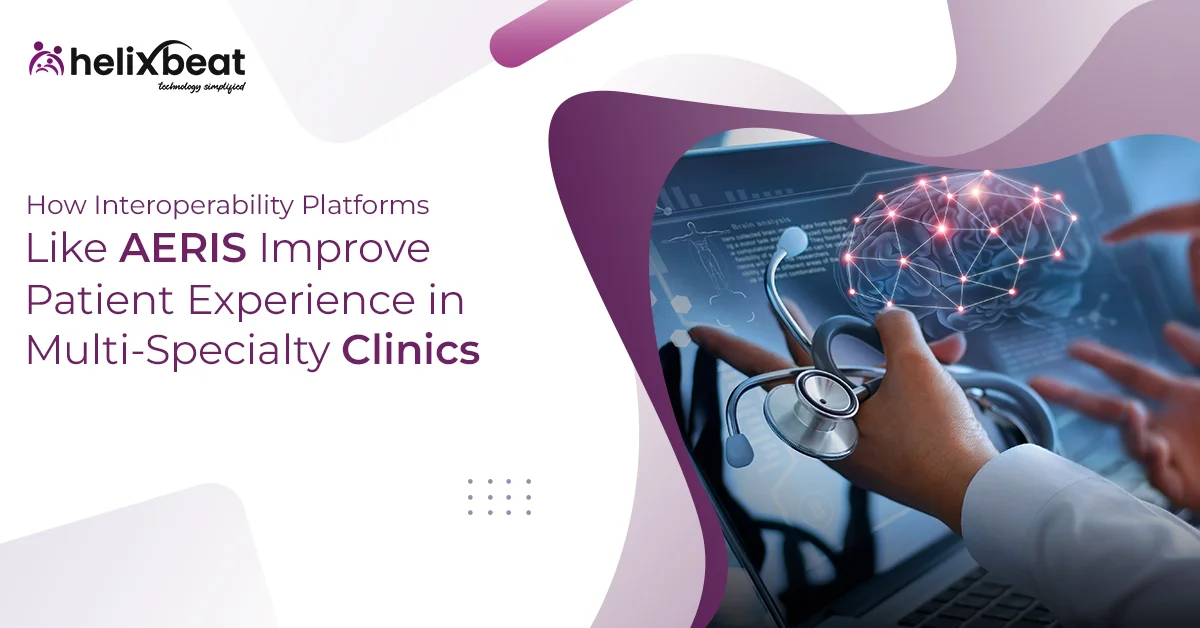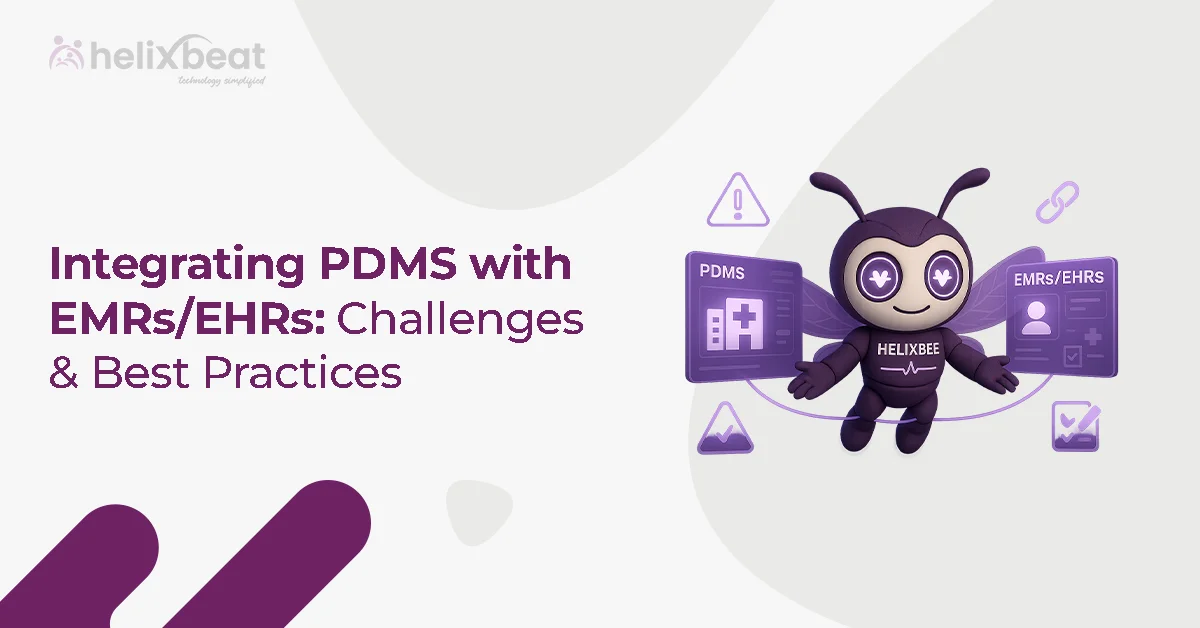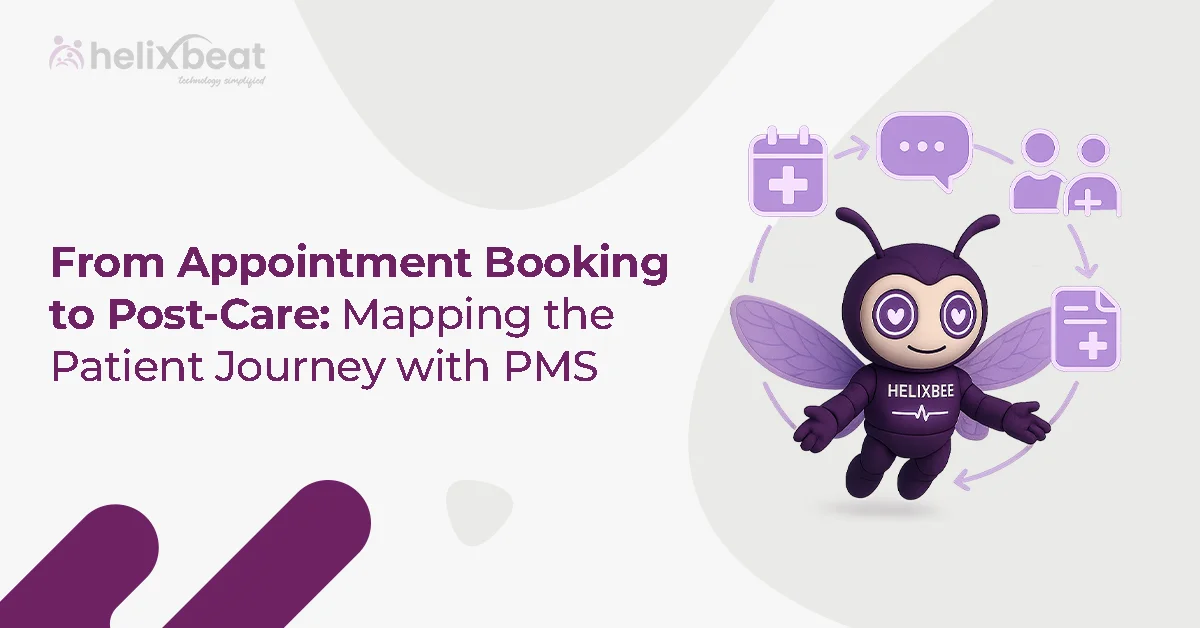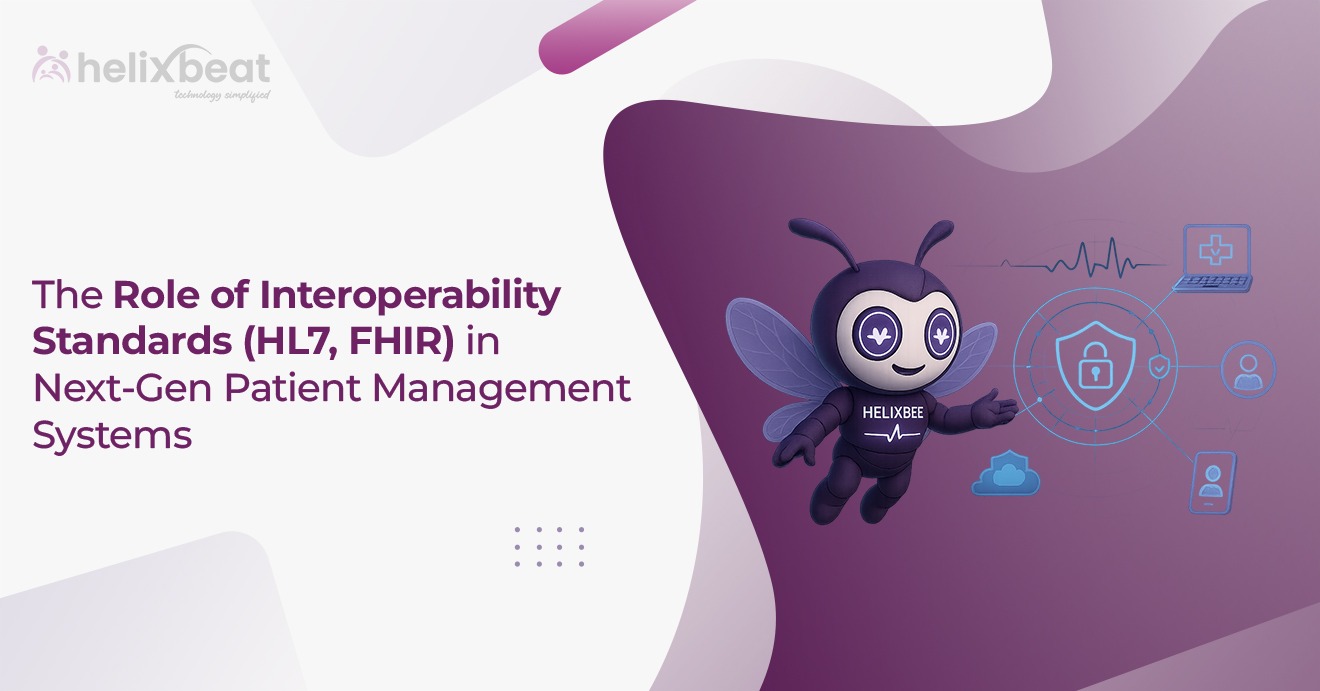In a multi-specialty clinic, patients often move between departments—seeing a general physician today, a radiologist tomorrow, and a specialist the next week. Each interaction generates vital health data: prescriptions, test results, diagnosis notes, and imaging files. But what happens when these data points are trapped in silos?
The result is all too common: repeated tests, delayed treatments, frustrating wait times, and inconsistent communication across departments.
This is where healthcare interoperability software like AERIS plays an important role—bringing seamless connectivity, smarter workflows, and better patient outcomes.
Let’s explore how interoperability, powered by platforms like AERIS, is reshaping the patient experience in multi-specialty clinics.

Table of Contents
The Fragmentation Problem in Multi-Specialty Clinics
Multi-specialty clinics often grow in complexity. Each department—cardiology, orthopedics, diagnostics, pharmacy—may use its own software system. One might run an HL7-compatible Electronic Health Record (EHR), another uses a PACS for imaging, and yet another relies on spreadsheets or standalone apps.
While each system might function well on its own, they rarely communicate with each other. For patients, this results in:
- Repeating medical history multiple times
- Getting the same diagnostic tests from different departments
- Experiencing slow diagnosis due to incomplete data
- Receiving care plans that overlook relevant medical details
In a setting where time and precision matter, disconnected systems can seriously impact patient satisfaction and health outcomes.
How AERIS Simplifies Healthcare Data Exchange
AERIS is an adaptive healthcare interoperability software built to connect disconnected systems and deliver real-time data exchange. It supports HL7 and FHIR standards, allowing diverse systems to speak a common language.
Whether your clinic uses legacy systems or modern cloud-based platforms, AERIS seamlessly integrates.
Key Capabilities
a. Multi-Standard Compatibility
Supports translation between different healthcare data formats, including HL7, FHIR, CDA, etc.
b. Intelligent Routing
Directs data to the correct system or team automatically, reducing manual interventions.
c. Plug-and-Play Deployment
Fits into existing infrastructure—whether on-premise, hybrid, or cloud-based.
d. Secure By Design
Built with strong encryption and access control to safeguard Protected Health Information (PHI).
With AERIS, clinics don’t have to rip and replace—they can unify what they already have.
1. Faster Diagnoses with Connected Patient Records
In a typical clinic setup, a patient may undergo blood work in one department, imaging in another, and receive consultations elsewhere. If these systems don’t communicate, clinicians often work with partial or outdated information.
With healthcare interoperability software like AERIS, different systems—like EHRs, lab software, and imaging platforms—can exchange relevant data in real-time. Instead of storing the information itself, AERIS routes it intelligently, so clinicians can access what they need through their existing systems. For example:
- A physician reviewing a cardiology report can instantly receive lab results pulled from the lab system.
- A dermatologist can view a patient’s medication history shared from the pharmacy module before prescribing treatment.
2. Seamless Transitions Between Departments
AERIS doesn’t just transmit data—it enables coordinated care. Let’s say a patient sees a general physician who orders an X-ray. Once the scan is done, AERIS routes the imaging results to both the physician and an orthopedic specialist without delays or duplicated requests.
There’s no need for printouts, CDs, or emails. This kind of seamless experience improves:
- Referral speed
- Care coordination
- Patient confidence in the clinic’s system
It also reduces the administrative burden on staff, freeing up more time for patient engagement.
3. Better Patient Communication and Engagement
When clinicians work from a single source of truth, they can provide consistent, informed updates.
Here’s how healthcare interoperability software AERIS improves patient interaction:
- Instant access to reports and updates reduces patient anxiety.
- Fewer repeated forms and questions lead to a smoother visit experience.
Patients feel like they’re being treated by one cohesive care team, rather than bouncing between unrelated departments.
4. Reducing Unnecessary Tests and Costs
Redundant testing is not just an inconvenience—it’s costly and potentially risky. Let’s say a patient recently underwent a CT scan, but the data isn’t available to another specialist due to incompatible systems. The result? The scan is repeated.
With healthcare interoperability software like AERIS, test results can be shared across departments instantly. That means:
- Lower out-of-pocket costs for patients
- Less exposure to radiation or discomfort
- Increased operational efficiency for the clinic
5. Faster Emergency Response Within the Clinic
Time is critical during emergencies—whether it’s a sudden allergic reaction in the dermatology wing or a cardiac event in the general OPD.
With AERIS:
- Clinicians can quickly access the patient’s medical history, medications, and allergies.
- Specialists can jump in with real-time updates, reducing confusion.
- Emergency response teams have access to accurate, recent health data before intervening.
This can make a significant difference in patient outcomes—and help staff act with confidence.
7. Simplified Compliance with Regulations
Regulatory frameworks around health data—like HIPAA in the U.S.—require clinics to adopt safe and structured data-sharing practices.
Healthcare interoperability software AERIS is built with security and compliance in mind:
- End-to-end encryption protects patient data in transit and at rest.
- Role-based access restricts sensitive data to authorized personnel.
- Standardized formats like FHIR support auditability.
This allows clinics to meet regulatory obligations without extra effort or disruption.
How AERIS Empowers Your Clinic’s Digital Transformation
Adopting healthcare interoperability software isn’t just a technical upgrade—it’s a strategic shift toward patient-centered care. Platforms like AERIS become the glue that binds departments together, allowing multi-specialty clinics to operate as unified, intelligent care ecosystems.
Key outcomes for clinics:
- Operational agility
- Improved patient trust and satisfaction
- Scalable data infrastructure
- Reduced staff burnout from manual data entry and communication gaps
In this competitive healthcare landscape, experience matters. And seamless data flows play a major role in creating that experience.
Final Thoughts
Multi-specialty clinics deal with a vast amount of clinical data every day. If these data stay disconnected, the patient experience suffers. From longer wait times to repeated diagnostics and poor communication—gaps in interoperability impact both care quality and clinic efficiency.
Healthcare interoperability software like AERIS changes this paradigm.
With real-time exchange, multi-standard support, intelligent routing, and strong data security, AERIS empowers clinics to deliver coordinated, timely, and informed care across all departments.
If your clinic is ready to upgrade its patient experience from fragmented to seamless, it might be time to rethink how your systems talk to each other—with AERIS as the digital bridge.
FAQs
What is healthcare interoperability software?
Healthcare interoperability software allows different healthcare systems—like EHRs, lab systems, imaging tools, and remote monitoring platforms—to communicate and exchange patient data in real-time using standardized formats.
How does AERIS help in a multi-specialty clinic?
Healthcare interoperability software AERIS enables real-time data exchange between different departments such as radiology, cardiology, pharmacy, and general OPD. It bridges system gaps without storing data, allowing clinicians to access relevant patient information across platforms instantly.
Does AERIS store patient data like an EHR?
No, AERIS does not store patient data. Instead, it acts as a communication engine that routes, translates, and standardizes data between various healthcare systems using formats like HL7, FHIR, DICOM, CDA, and more.
How does AERIS improve the patient experience?
By enabling fast, accurate exchange of data across departments, AERIS reduces delays, avoids repeat tests, and supports coordinated care. Patients experience smoother transitions, better communication, and faster diagnoses.














